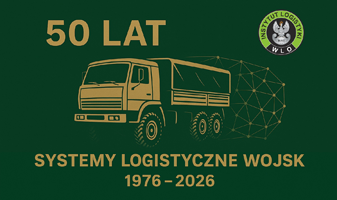ARTYKUŁ ORYGINALNY
Women's military service in Poland in the perspective of recruiting women to the Military University of Technology
1
Faculty of Security, Logistics and Management, Military University of Technology, Poland
2
Ministry of Defence of the Republic of Poland
Zaznaczeni autorzy mieli równy wkład w przygotowanie tego artykułu
A - Koncepcja i projekt badania; B - Gromadzenie i/lub zestawianie danych; C - Analiza i interpretacja danych; D - Napisanie artykułu; E - Krytyczne zrecenzowanie artykułu; F - Zatwierdzenie ostatecznej wersji artykułu
Data nadesłania: 06-10-2023
Data ostatniej rewizji: 29-02-2024
Data akceptacji: 27-09-2024
Data publikacji: 30-09-2024
Autor do korespondencji
Anna Pęzioł
Faculty of Security, Logistics and Management, Military University of Technology, Kaliskiego 2, 00-908, Warsaw, Polska
Faculty of Security, Logistics and Management, Military University of Technology, Kaliskiego 2, 00-908, Warsaw, Polska
SLW 2024;60(1):5-22
SŁOWA KLUCZOWE
military educationKeywords: professional armywomen's military servicemilitary recruitmentMilitary Academy of Technology
DZIEDZINY
STRESZCZENIE
Abstract: Since 1999, Poland has become a member of the North Atlantic Alliance. The aftermath of this event was that women were allowed to serve in all military positions. At the same time, military academies gave women the opportunity to study on terms previously available only to men. The forerunner in this area was the Military University of Technology (WAT), which not only was the first to open the Academy to female cadets, but also educated the largest number of female officers. The existing research gap regarding the process of transformation of the Armed Forces of the Republic of Poland in the context of educating a highly qualified officer corps, taking into account fundamental changes in ensuring women have access to all officer positions, required an analysis of the process of recruitment and education of women for military service by the largest military university in Poland. Now, after 20 years of training, it is possible to evaluate this process, which became the purpose of this article. The question of how the number of women at the WAT changed in the process of recruitment and enrollment was adopted as a research problem. The intention of the Authors is not only to identify existing trends, but also to highlight the distinguished role of the Military University of Technology in this area. It was assumed (research hypothesis) that not only the interest of women in military studies is increasing, but also the number of women choosing technical education is increasing, as well. The article uses research methods in relation to the cognitive and praxeological research problem: systematic literature review, quantitative methods and qualitative methods, comparative methods, concretization, and formalization methods. The research conducted clearly indicates an upward trend in women's interest not only in military studies, but also in studying at the Academy in general. Although some fluctuations over a period of more than 20 years are noticeable, they are due to economic, demographic, or political factors. Nevertheless, the article clearly shows the significant role of the Military Academy of Technology in educating female officers and thus meeting the requirements of a modern, professional army.
Udostępnij
Przetwarzamy dane osobowe zbierane podczas odwiedzania serwisu. Realizacja funkcji pozyskiwania informacji o użytkownikach i ich zachowaniu odbywa się poprzez dobrowolnie wprowadzone w formularzach informacje oraz zapisywanie w urządzeniach końcowych plików cookies (tzw. ciasteczka). Dane, w tym pliki cookies, wykorzystywane są w celu realizacji usług, zapewnienia wygodnego korzystania ze strony oraz w celu monitorowania ruchu zgodnie z Polityką prywatności. Dane są także zbierane i przetwarzane przez narzędzie Google Analytics (więcej).
Możesz zmienić ustawienia cookies w swojej przeglądarce. Ograniczenie stosowania plików cookies w konfiguracji przeglądarki może wpłynąć na niektóre funkcjonalności dostępne na stronie.
Możesz zmienić ustawienia cookies w swojej przeglądarce. Ograniczenie stosowania plików cookies w konfiguracji przeglądarki może wpłynąć na niektóre funkcjonalności dostępne na stronie.


